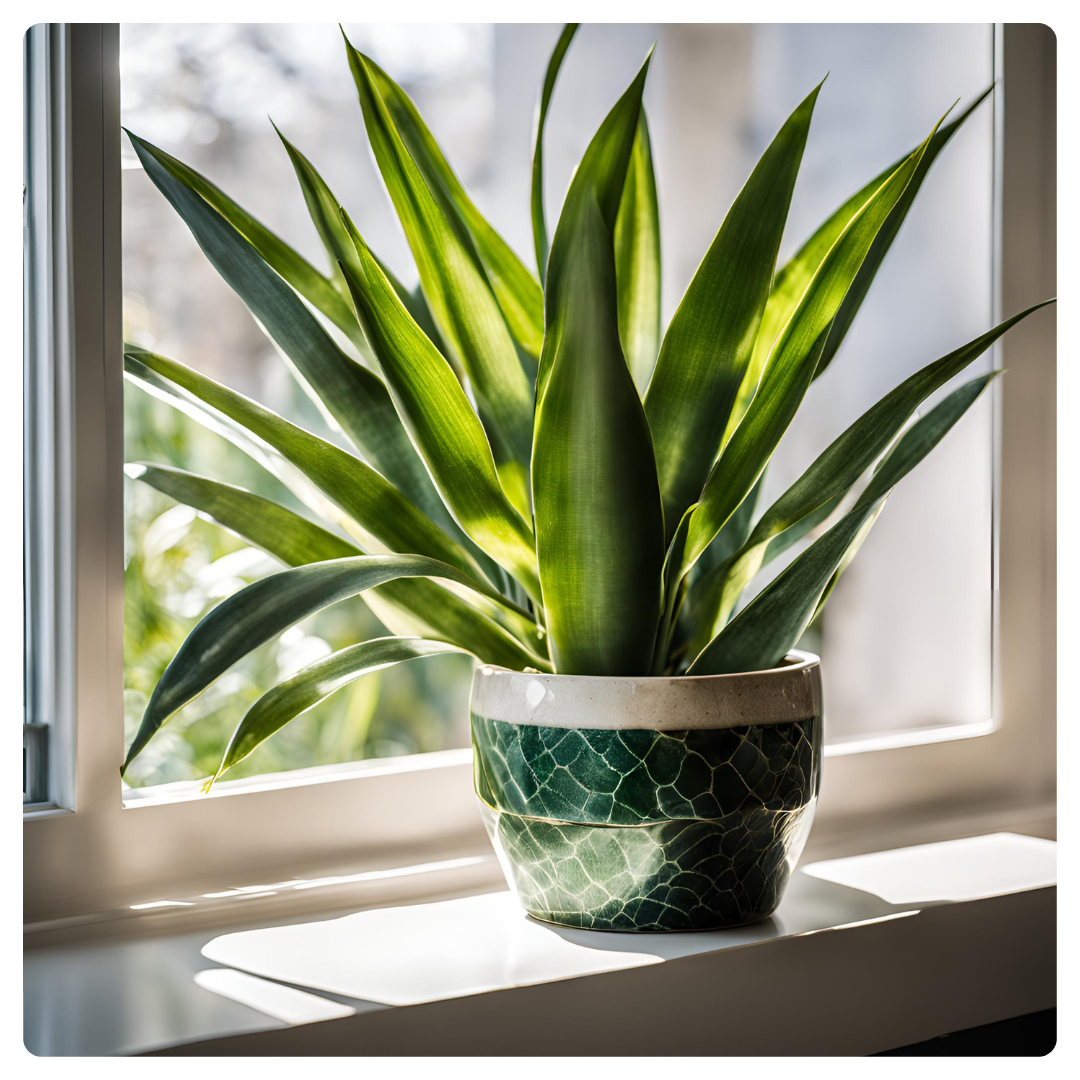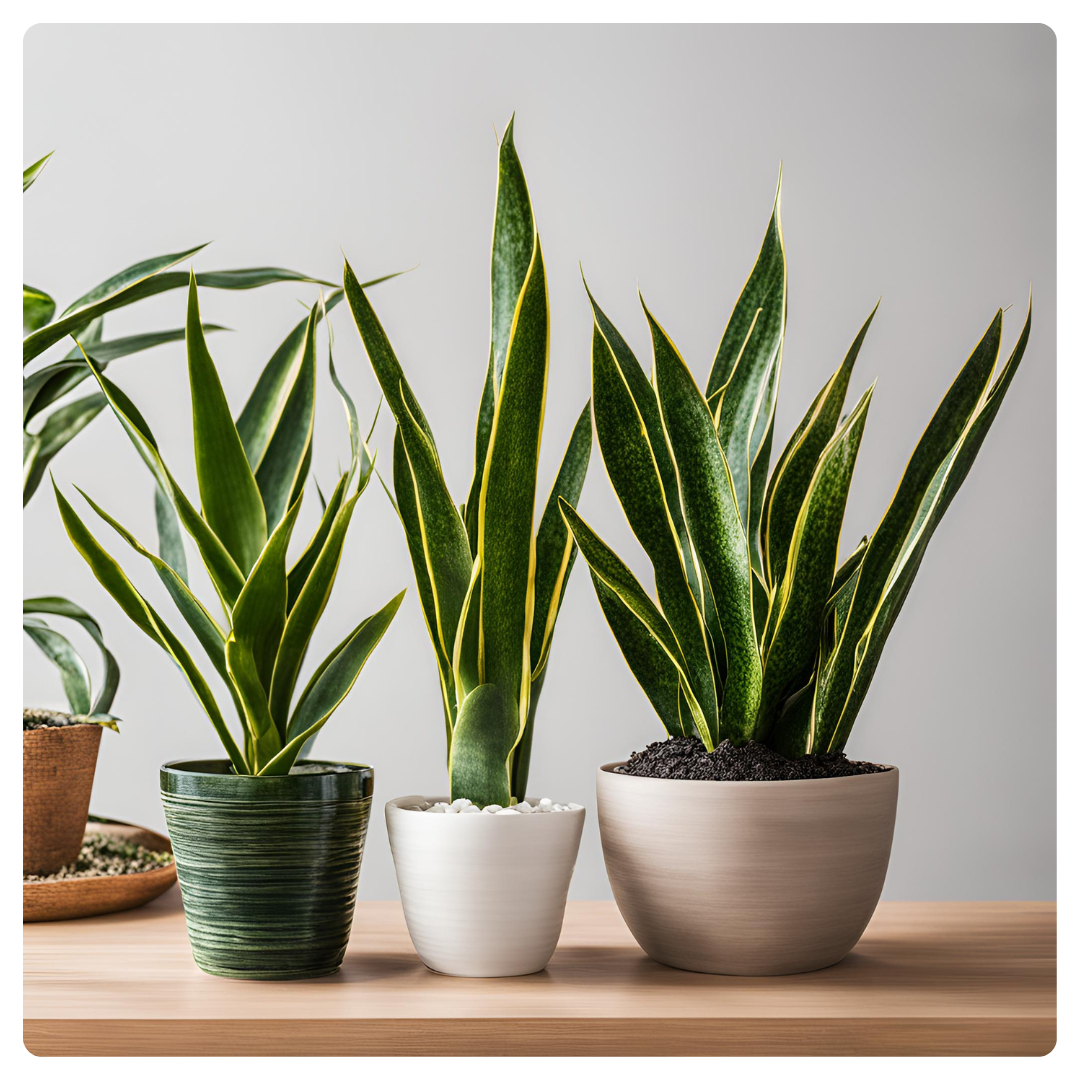The Snake Plant (Sansevieria), also known as Mother-in-Law’s Tongue, is one of the most popular and resilient houseplants. With its upright, sword-like leaves and ability to thrive in a variety of environments, the Snake Plant is an ideal addition to any home. In this guide, we’ll cover everything you need to know about growing and caring for your Snake Plant.
1. Why Snake Plants Are Perfect for Your Home
Snake Plants are well-loved not only for their striking appearance but also for their air-purifying abilities. These plants help remove toxins like formaldehyde and benzene from the air, making them great for improving indoor air quality.
- Tip: Snake Plants are perfect for beginners and those who prefer low-maintenance plants that can handle neglect.
2. Choosing the Right Snake Plant Variety
There are many varieties of Snake Plants to choose from, each with different leaf patterns, sizes, and colors. Some popular options include:
- Sansevieria trifasciata (the classic variety with tall green leaves)
- Sansevieria cylindrica (with round, spear-like leaves)
- Sansevieria ‘Futura Superba’ (a more compact version with golden-edged leaves)
- Shop Snake Plants: Check out CTN Petals Shop for a variety of Snake Plants.
3. Light Requirements
Snake Plants are extremely versatile when it comes to light. They thrive in bright, indirect sunlight but can also tolerate low-light conditions, making them perfect for offices, bedrooms, or bathrooms.
- Tip: While they can handle lower light, for best growth and vibrant leaves, place your Snake Plant in bright, indirect light.
4. Watering Your Snake Plant
Snake Plants store water in their leaves, so they don’t need frequent watering. Overwatering is one of the few ways to harm a Snake Plant, as it can lead to root rot.
- Watering Tip: Allow the soil to dry out completely between waterings. Water once every 2-4 weeks, and reduce watering in the winter.
5. Soil Requirements
Snake Plants need well-draining soil to thrive. A cactus or succulent soil mix works best to prevent water retention, which could cause root rot.
- Soil Mix: Use CTN Petals Soil Mix for optimal drainage and aeration to keep your Snake Plant happy and healthy.
6. Temperature and Humidity
Snake Plants do best in temperatures between 60°F and 85°F (15°C to 29°C). They are quite adaptable but should be kept away from cold drafts or temperatures below 50°F (10°C).
- Tip: These plants tolerate low humidity levels, making them great for dry indoor conditions.
7. Fertilizing Your Snake Plant
Snake Plants don’t need much fertilization, but occasional feeding during the growing season (spring and summer) can encourage growth.
- Fertilizer: Use a balanced fertilizer like CTN Petals Fertilizer once every 2-3 months during the growing season. Avoid fertilizing in the winter.
8. Pest Control
Snake Plants are generally resistant to pests, but they can occasionally attract spider mites, mealybugs, or scale. Regularly check the leaves for signs of infestation.
- Pest Control Tip: Wipe the leaves clean and use CTN Petals Pest Control Solutions if needed to keep pests at bay.
9. Repotting Your Snake Plant
Snake Plants grow slowly and don’t need frequent repotting. You can repot every 2-3 years or when the plant becomes root-bound. Use a pot with drainage holes and a well-draining soil mix.
- Repotting Tip: For best results, use CTN Petals Soil Mix when repotting your Snake Plant.
10. Propagation
One of the easiest ways to propagate Snake Plants is by dividing the rhizomes or by taking leaf cuttings.
- Propagation Tip: Cut a healthy leaf into sections and place them in water or soil to root. Ensure the cuttings are kept in bright, indirect light until roots form.
11. Common Problems
- Overwatering: The most common issue with Snake Plants is overwatering, which can lead to root rot. Always allow the soil to dry out completely before watering again.
- Brown Leaf Tips: This can result from too much direct sunlight or inconsistent watering. Move your plant to a spot with indirect light and adjust your watering schedule.
- Pests: If you notice pests, act quickly using CTN Petals Pest Control to prevent damage.

Conclusion
The Snake Plant is a resilient, low-maintenance plant that thrives in a variety of conditions. With minimal care, it can add a touch of greenery to your home while purifying the air. Whether you’re new to houseplants or a seasoned plant parent, the Snake Plant is a fantastic choice.
For all your plant care needs, from Snake Plants to the perfect soil and fertilizer, visit CTN Petals Shop. Follow us on Instagram for more plant care tips, inspiration, and updates.


